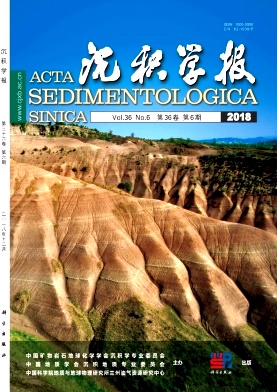Classification and Geological Significance of Soft-Sediment Deformation Structures of Lower Cretaceous in Lingshan Island
doi: 10.14027/j.issn.1000-0550.2018.085
- Received Date: 2017-07-19
- Rev Recd Date: 2017-11-29
- Publish Date: 2018-12-10
-
Key words:
- soft-sediment deformation structures (SSDS) /
- Lingshan Island /
- Lower Cretaceous /
- driving forces /
- classification
Abstract: Soft-sediment deformation structures (SSDS) are a series of structures formed due to transformation of plastic sediment under liquidization and various driving forces after deposition but before lithification. SSDS are often developed in the strata with different scales, shapes, periods and origins. No doubt that earthquake is one of the most common causes of deformation of soft sediments, however, it is not limited only to earthquakes. SSDS are not a diagnosis of any specific trigger mechanism. According to the classification scheme of induced events, it is much more applicable in the same event, but it is difficult to distinguish the real cause in "multi causes and even the same phenomenon" of deformation. Therefore, the classification based on origin is often limited. In fact, the driving forces are the most direct factors causing the deformation of soft sediments and directly control specific forms of deforming structures. In order to clarify their specific types and development, this study advocates the classification of SSDS according to different driving forces. Based on literature and field outcrop investigation, the Early Cretaceous gravity flows deposit in the Lingshan Island are developed very well with SSDS in multi scales, forms, layers, periods and genesises, which can be classified into three types:the SSDS driven by gravity acting on slopes; the SSDS driven by gravity due to a reverse density gradient; and the SSDS driven by upward shear due to pore fluid. In addition, considering the SSDS development in the interior of the lower Cretaceous slump in the Lingshan island, according to the types of stresses when the deformation structures were formed, SSDS driven by gravity acting on slopes are further divided into three subtypes:compression types, tension types and shear types. 3 categories of more than 10 kinds of SSDS are identified in the Lower Cretaceous in Lingshan Island:SSDS driven by gravity acting on slopes including compression types (synsedimentary reverse faults and disordered compression deformation structures etc.), tension types (synsedimentary boudins, step faults and domino structures etc.) and shear types(some folds and fractures caused by shear and soft double structures etc.); SSDS driven by gravity due to a reverse density gradient including load structures, flame structures and ball-and-pillow structures etc.; SSDS driven by upward shear due to pore fluid including liquefied diaper, water-escape structures, convolute lamination and sandstone dykes etc. According to the types, development and distributions of SSDS, Early Cretaceous seismic activity was very frequent in Lingshan Island. The driving forces directly act on the soft sediment. And their types, strength, modes of action and duration affect the types, shapes and scales of the SSDS. Classification of soft-sediment deformation structures based on driving forces of Lower Cretaceous in Lingshan Island can distinguish SSDS in the slump beds from the normal sedimentary layer, and can distinguish SSDS formed during the slump process from the earthquake process. This classification can clarifies the dynamic mechanism of the deformation of soft sediment. Hence it is scientific, applicative and feasible to divide SSDS based on the driving forces. Discussion on classification of SSDS is benefit to facilitate its field identification and genesis analysis, and to provide a theoretical basis for other similar geological researches.
| Citation: | SUN FuNing, YANG RenChao, FAN AiPing, YOU JingQian. Classification and Geological Significance of Soft-Sediment Deformation Structures of Lower Cretaceous in Lingshan Island[J]. Acta Sedimentologica Sinica, 2018, 36(6): 1105-1118. doi: 10.14027/j.issn.1000-0550.2018.085 |






 DownLoad:
DownLoad: